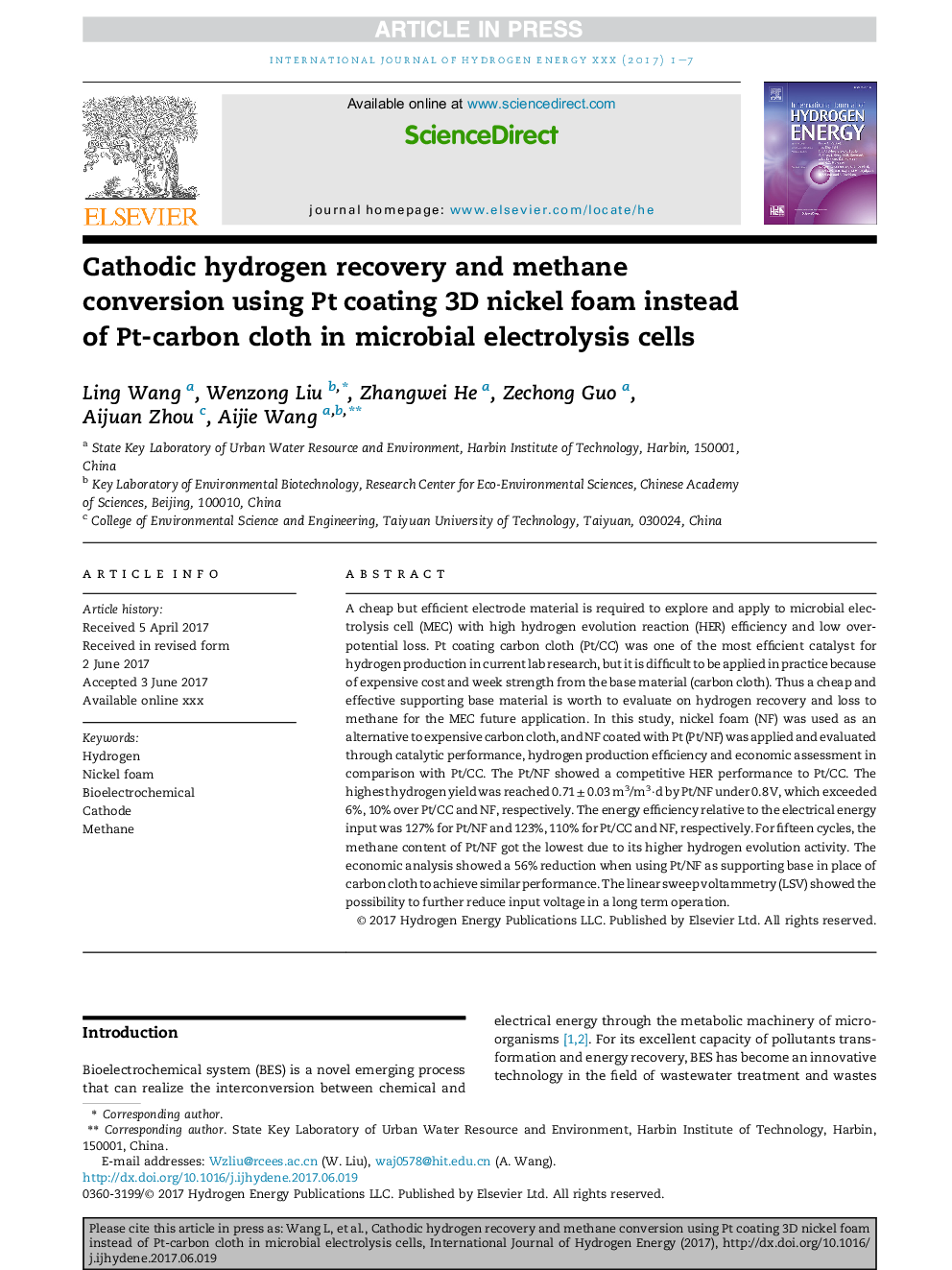| Article ID | Journal | Published Year | Pages | File Type |
|---|---|---|---|---|
| 5146599 | International Journal of Hydrogen Energy | 2017 | 7 Pages |
Abstract
A cheap but efficient electrode material is required to explore and apply to microbial electrolysis cell (MEC) with high hydrogen evolution reaction (HER) efficiency and low over-potential loss. Pt coating carbon cloth (Pt/CC) was one of the most efficient catalyst for hydrogen production in current lab research, but it is difficult to be applied in practice because of expensive cost and week strength from the base material (carbon cloth). Thus a cheap and effective supporting base material is worth to evaluate on hydrogen recovery and loss to methane for the MEC future application. In this study, nickel foam (NF) was used as an alternative to expensive carbon cloth, and NF coated with Pt (Pt/NF) was applied and evaluated through catalytic performance, hydrogen production efficiency and economic assessment in comparison with Pt/CC. The Pt/NF showed a competitive HER performance to Pt/CC. The highest hydrogen yield was reached 0.71 ± 0.03 m3/m3·d by Pt/NF under 0.8 V, which exceeded 6%, 10% over Pt/CC and NF, respectively. The energy efficiency relative to the electrical energy input was 127% for Pt/NF and 123%, 110% for Pt/CC and NF, respectively. For fifteen cycles, the methane content of Pt/NF got the lowest due to its higher hydrogen evolution activity. The economic analysis showed a 56% reduction when using Pt/NF as supporting base in place of carbon cloth to achieve similar performance. The linear sweep voltammetry (LSV) showed the possibility to further reduce input voltage in a long term operation.
Related Topics
Physical Sciences and Engineering
Chemistry
Electrochemistry
Authors
Ling Wang, Wenzong Liu, Zhangwei He, Zechong Guo, Aijuan Zhou, Aijie Wang,
